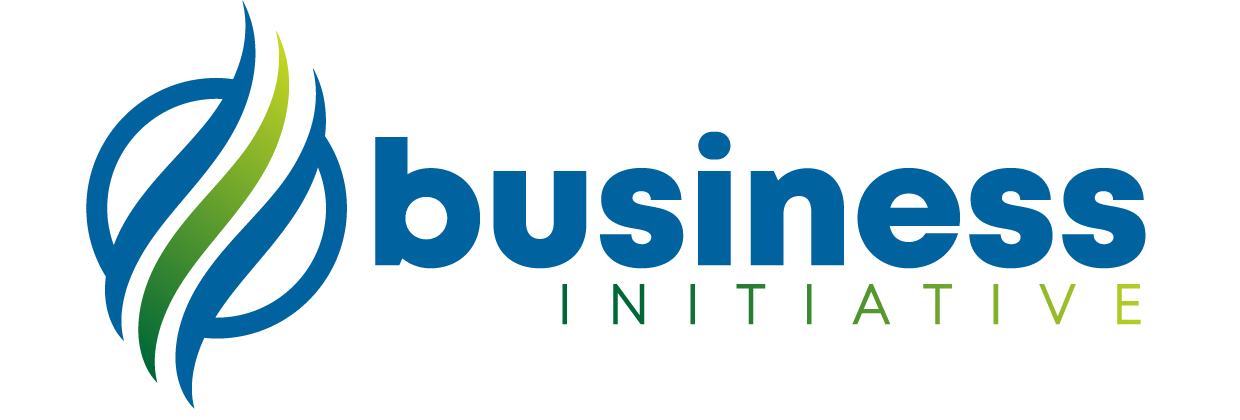Welcome to our comprehensive guide on interest and interest rates, designed specifically for business owners like yourself.
In today’s fast-paced financial world, understanding the ins and outs of interest is crucial in making informed decisions that can significantly impact your business’s financial health.
 Key Takeaways
Key Takeaways
- Understand the basics: Grasp the concepts of simple and compound interest, as they directly impact your business loans and investments.
- Shop around for rates: Compare different lenders to secure the best interest rate for your business loans or lines of credit.
- Monitor market trends: Keep an eye on economic indicators to anticipate changes in interest rates, helping you make informed financial decisions.
- Consider refinancing: Periodically reassess your existing loans to determine if refinancing could save your business money by lowering interest payments.
- Harness the power of compounding: Reinvest earnings or savings into interest-bearing accounts to accelerate growth and maximize returns through compound interest.
This article aims to provide you with a solid foundation of knowledge about interest, ultimately empowering you to navigate the complex landscape of loans, investments, and growth strategies.
To get the most out of this guide, we recommend reading it from start to finish.
By doing so, you’ll gain a thorough understanding of various aspects of interest, including how it’s calculated and applied in different scenarios.
Additionally, we’ll explore the strategic utilization of interest rates to benefit your business operations.
 Table of Contents
Table of Contents
As you progress through this article, take note of any questions or concepts that are new to you or require further clarification.
This will enable you to identify areas where additional research might be necessary and allow for a more profound comprehension of the subject matter.
So without further ado, let’s dive into the fascinating world of interest and unlock your potential for making smarter financial decisions that will propel your business towards success!
Keep reading as we embark on this entrepreneurial journey together.
The Definition of Interest
Interest is the cost of borrowing money or the return on investment (ROI) earned by lending money.
It is typically expressed as a percentage of the principal, which is the original amount of money borrowed or invested.
Interest can be earned or paid over a specific period, such as annually, monthly, or daily.
Interest Calculators
There are two main types of interest: simple interest and compound interest.
Understanding the difference between the two is crucial for making informed financial decisions.
Simple Interest
Simple interest is calculated based on the original principal amount.
The formula for calculating simple interest is:
Simple Interest = Principal × Interest Rate × Time
For example, if you borrow $10,000 at a 5% annual interest rate for two years, the total amount of interest paid would be $1,000 ($10,000 × 0.05 × 2).
Simple Interest Calculator
Compound Interest
Compound interest is calculated based on the initial principal amount and the accumulated interest from previous periods.
In other words, interest is earned on both the original investment and any interest previously earned.
The formula for calculating compound interest is:
Compound Interest = Principal × (1 + Interest Rate / Number of Compounds per Period)^(Number of Compounds per Period × Time) – Principal
Using the same example as above, if the $10,000 loan had a 5% annual interest rate compounded annually for two years, the total amount of interest paid would be $1,025.50.
Compound Interest Calculator
How do Interest Rates Work and How do They Affect Your Business?
Interest rates are an essential factor in the world of finance and have a significant impact on your business.
They determine the cost of borrowing money and the return on investment when lending money or investing in various financial instruments.
Low-interest rates can encourage borrowing and investing, leading to economic growth.
However, if interest rates are too low for an extended period, it can lead to inflation and asset bubbles.
On the other hand, high-interest rates can discourage borrowing and investing, leading to a slowdown in economic growth.
As a business owner, it’s crucial to monitor interest rate trends and understand how they can affect your financial decisions, such as taking out loans, investing in new projects, or managing your cash flow.
What Factors Affect Interest Rates?
Several factors can affect interest rates, including:
1. Inflation:
Central banks often adjust interest rates to control inflation.
When inflation is high, central banks may raise interest rates to encourage saving and discourage borrowing, thus reducing the amount of money in circulation.
2. Economic Growth:
A strong economy may lead to higher interest rates, as businesses and consumers are more likely to borrow and invest.
Conversely, weak economic growth may result in lower interest rates to stimulate borrowing and investment.
3. Government Policies:
Fiscal and monetary policies implemented by governments and central banks can directly impact interest rates.
For example, quantitative easing involves the central bank purchasing government bonds, which can lower interest rates.
Business Loans and Interest Rates
Business loans can help you finance various aspects of your business, such as expansion, inventory purchases, or equipment upgrades.
Interest rates on business loans can vary based on factors such as the type of loan, the borrower’s creditworthiness, and the term of the loan.
Before taking out a business loan, it’s essential to carefully consider the interest rate and terms of the loan.
A lower interest rate will result in lower monthly payments and less interest paid over the life of the loan.
Investment Opportunities and Interest Rates
Interest rates can also impact your business’s investment opportunities.
When interest rates are low, it may be an excellent time to invest in projects or assets that can generate higher returns than the cost of borrowing.
On the other hand, when interest rates are high, it may be more challenging to find investment opportunities that can generate returns above the cost of borrowing.
In such cases, it’s essential to carefully evaluate your investment options and consider alternative financing methods, such as partnering with investors or utilizing retained earnings.
In Summary…
Understanding interest and interest rates is crucial for making well-informed financial decisions as a business owner.
When you master the concepts of simple and compound interest, monitoring interest rate trends, and evaluating the impact of interest rates on loans and investments, you can make more strategic decisions that contribute to your business’s long-term success.
Applying this information in a practical sense enables you to secure favorable loan terms, identify lucrative investment opportunities, and optimize your cash flow management.
Ultimately, this empowers you to drive sustainable growth and profitability for your business.
Don’t miss out on the opportunity to leverage this knowledge for your business’s benefit! Schedule a consultation call with our Business Initiative experts today or use our contact form to get personalized advice tailored to your unique financial needs.
Stay ahead of the curve by subscribing to our newsletter for valuable insights and tips on finance, business strategies, and more.
Don’t forget to follow us on Twitter for real-time updates on market trends and essential industry news relevant to your business.
Take action now and unlock your full potential as a savvy entrepreneur with mastery over interest rates!
Frequently Asked Questions

What is the difference between simple and compound interest?
Simple interest is calculated only on the initial principal amount, while compound interest is calculated on the initial principal plus any accumulated interest from previous periods.
Learn More...
The primary distinction between simple and compound interest lies in their calculation methods.
With simple interest, you pay or earn a fixed percentage of the original loan or investment amount (principal) over time.
In contrast, compound interest involves earning or paying interest not only on the principal but also on any previously earned or paid interest that has been added to the balance.
For example, consider a $10,000 investment with an annual 5% return. With simple interest, you would earn $500 per year ($10,000 x 0.05), totaling $2,500 after five years.
However, with compound interest compounded annually, your returns would increase each year as follows: Year 1: $10,500, Year 2: $11,025, Year 3: $11,576.25, ..., Year 5: $12,763.
How do central banks influence interest rates?
Central banks influence interest rates by adjusting their key policy rate and implementing monetary policies such as open market operations and quantitative easing.
Learn More...
Central banks play a critical role in managing a country's economy by setting short-term benchmark rates that commercial banks use as a reference for determining their lending rates.
For example, when a central bank lowers its key policy rate (e.g., Federal Funds Rate in the US), commercial banks typically follow suit by lowering their lending rates—making borrowing cheaper for businesses and consumers.
Additionally, central banks can utilize monetary tools like open market operations (buying/selling government bonds) to regulate the money supply and affect interest rates.
When a central bank buys government bonds, it injects money into the financial system, increasing the money supply and lowering interest rates.
Conversely, selling government bonds removes money from the system, reducing the money supply and raising interest rates.
How do interest rate fluctuations impact businesses?
Interest rate fluctuations can impact businesses by affecting their borrowing costs, investment opportunities, and cash flow management.
Learn More...
Interest rate changes have several implications for businesses:
- Borrowing Costs: Low-interest rates make borrowing more affordable, while high-interest rates increase borrowing costs.
- Investment Opportunities: Low rates encourage investments in projects with higher returns than the cost of borrowing.
- Cash Flow Management: Rate changes can affect how businesses manage their cash reserves, influencing investments, debt payments, and reserves.
When should I consider refinancing my business loan?
Consider refinancing your business loan when you can secure a lower interest rate or better loan terms that save your business money.
Learn More...
Refinancing involves replacing your existing business loan with a new one offering more favorable terms or a lower interest rate.
Refinancing may be beneficial under several circumstances:
- Lower Interest Rates: If market interest rates have dropped since securing your original loan, you might qualify for a lower interest rate.
- Improved Loan Terms: You may find loans with better repayment terms or more flexible conditions.
Be mindful of prepayment penalties or fees associated with refinancing and weigh these costs against potential savings before deciding.
How can compounding benefit my business's investments?
Compounding accelerates investment growth by earning returns on both the initial principal and accumulated interest from previous periods.
Learn More...
Harnessing the power of compound interest can significantly enhance your business's investment returns over time.
By reinvesting earnings or savings into interest-bearing accounts or assets, you allow your profits to generate additional returns, leading to exponential growth in value.
If you invest $10,000 at an annual 8% return compounded monthly for five years, your investment would grow to approximately $14,898, a gain of nearly $4,898 due primarily to compounding's effect.
Businesses can maximize their long-term financial growth potential by strategically utilizing compound interest in investments like savings accounts, bonds, stocks, or real estate.


